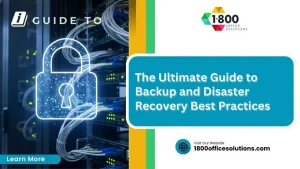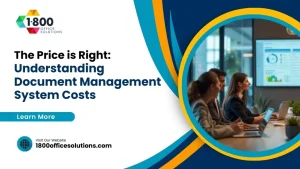Comprehensive Guide to Choosing Your Phone Conferencing Service
Are you struggling to identify a phone conferencing service that integrates seamlessly with your business’s systems, including Microsoft Outlook, and ensures accessibility for all participants, whether they’re dialing in via landline or SMS? This guide demarcates the essential features of phone conferencing solutions, contrasts leading providers, and offers practical steps to ascertain that your business selects an optimal service. Readers will uncover how to tailor a conferencing solution to their specific operational requirements, enhancing communication efficacy and collaboration. Addressing the common hurdle of synchronizing various technologies, our focused content promises to simplify your selection process, guaranteeing a conferencing service that aligns with your enterprise’s connectivity needs.
Understanding Phone Conferencing Services

As businesses navigate an increasingly connected world, phone conferencing has emerged as a crucial tool. This practical solution expands client interaction without the bounds of physical presence, integrating seamlessly with existing telephone systems. Businesses evolving with conference call software find that beyond the basic function of connecting multiple parties in a call, the benefits are manifold. From enhanced client meetings to dynamic customer support, phone conferencing services propel efficiency and foster engagement. The following sections demystify the definition, showcase the progress of telecommunications in business, and delineate the advantages of adopting conference calling in today’s fast-paced markets.
Defining Phone Conferencing Solutions
Phone conferencing solutions refer to technologies that allow multiple participants to engage in an audio discussion via a conference phone line, often enriching the process with features such as screen sharing and file transfer. Solutions range from traditional systems leveraging plain old telephone service (POTS) to cutting-edge platforms using internet access for VoIP (Voice over Internet Protocol) calls. Notable services like Cisco Webex and Skype have revolutionized this space, enabling businesses to host virtual meetings with ease, fostering collaboration and decision-making across geographies.
In the realm of conferencing services, ease of use and reliability stand as non-negotiable factors for businesses. Operators focus on delivering clear audio quality and uninterrupted connectivity, considering the value of a smooth conference experience. Integration with business tools, compatibility with a broad range of devices, and the provision of secure connections are hallmarks of top-tier conferencing services that experts recommend. Acknowledging these critical features empowers decision-makers to align their conferencing needs with robust solutions that support their strategic objectives.
The Evolution of Telecommunication in Business
The telecommunication landscape within business has undergone transformative changes, with advancements in technology redefining how corporations communicate. Tools like Grasshopper and HubSpot have introduced a new era where the ease of establishing a conference call service is now a fundamental expectation for enterprises of all sizes. As a key asset in collaboration and scalability, such services have made strides in affordability, with price no longer being a barrier to entry for small businesses seeking to expand their reach.
Consequently, the selection of a conference call service has become a strategic decision, underscoring the need for a tool that not only facilitates clear communication but also aligns with overarching business goals. Modern services integrate with CRM systems, offer analytical insights, and provide an intuitive user experience; these are features that have evolved from the previously simplistic approach to teleconferencing. Professionals now seek comprehensive solutions that are not merely about connection but enhancing the quality and productivity of business interactions.
Benefits of Using Phone Conferencing Services
Phone conferencing services enhance productivity by allowing participants to join meetings from virtually anywhere using a mobile device. This flexibility ensures that team members can collaborate and make decisions in real-time, regardless of geographical barriers. A professional using a smartphone, for instance, can connect to the conference call line through a web browser or dedicated application, making it possible to share insights and resolve issues without being tethered to an office setting.
Furthermore, these services contribute to cost reductions as they eliminate the need for expensive travel and accommodations for meetings. One can acquire such services without burdensome financial obligations, often requiring just a credit card for setup. This convenience translates to web conferencing becoming an accessible resource for businesses, allowing them to allocate funds to other vital operational areas while still enjoying the luxury of effective communication technologies.
Key Features to Consider When Choosing a Service

When selecting a phone conferencing service in the United States, businesses must consider a range of pivotal features to ensure clear communication and seamless functionality. Assessing audio quality and call reliability is the cornerstone for telecommuting professionals, while an intuitive user interface bolsters efficiency. The significance of robust encryption and steadfast data protection cannot be overstated, as is the requisite integration with existing business tools and software. Moreover, scalability reveals the service’s aptitude to grow alongside the business, just as essential features like call forwarding exemplify nimble customer service. Together, these elements form the framework of a superior teleconference system tailored to organizational needs.
Assessing Audio Quality and Call Reliability
In the search for the right phone conferencing service, the clarity and reliability of the audio cannot be overstated. For businesses integrating a conference dial-in number into their operations, the objective is to enable crisp and clear communication, comparable to face-to-face meetings. Leaders must prioritize services that provide high-fidelity sound to avoid misunderstandings and ensure seamless dialogue; this could make the difference between a productive session and one hampered by technical difficulties.
When evaluating software for conference calling services, one must also weigh the impact of reliability on their budget. Investing in a phone conferencing service that promises consistent uptime and minimal disruptions signifies a dedication to professionalism and client satisfaction. A reliable service means that each participant can trust in a stable connection, eliminating concerns over lost connections or dropped calls during pivotal decision-making moments.
Evaluating User Interface and Ease of Use
When electing a phone conferencing service, the simplicity and intuitiveness of the user interface is paramount. An accessible interface, such as those provided by Nextiva or Microsoft Teams, ensures participants can navigate the platform with minimal effort, leading to a smoother conferencing experience. As the gateway to the service’s functionality, a well-designed interface also paves the way for seamless collaboration, enabling users to focus on the meeting’s content rather than on how to operate the service.
Additionally, the user interface often serves as a conduit to advanced features like UberConference‘s analytics, thus the clarity with which these features are presented can directly influence a business’s capability to analyze call data and optimize communication strategies. An interface that cleanly integrates these advanced options affords businesses a tangible edge, facilitating the extraction of actionable insights while ensuring meetings are productive and resolving any technical issues swiftly.
Security Protocols and Data Protection
In the current digital era, data protection and adherence to stringent security protocols are imperative when selecting a phone conferencing service. One must ensure that the chosen service employs robust measures such as transport layer security (TLS) to safeguard data transmission. A service like Dialpad, known for its high uptime, guarantees not just availability but also security, providing peace of mind for users on various platforms including Firefox and iOS.
Businesses must prioritize security to protect sensitive information discussed during conference calls. A service with a strong track record of upholding security standards and preventing breaches serves as a pillar for trust between a company and its clients. Upholding such standards ensures that participants can engage in candid discussions, confident their data is shielded from unauthorized access.
Integration With Business Tools and Software
Integration with current business tools and software stands as a critical consideration for businesses in the process of selecting a voip conference phone service. By opting for services that harmonize with existing systems, firms facilitate the seamless transfer of information, automate advertising efforts, and enhance overall productivity. Services that allow for straightforward download and sync capabilities with customer relationship management (CRM) and enterprise resource planning (ERP) systems enable companies to keep vital communication channels and data repositories in alignment.
An optimal phone conferencing solution offers not merely a means to connect but acts as a conduit for enhancing business operations. It leverages integrations to transform simple voice exchanges into rich data-gathering opportunities, where insights can be immediately acted upon or archived for strategic analysis. When these systems work in unison, businesses experience an uptick in efficiency, as employees are able to capitalize on the integration to streamline workflows and focus on high-value tasks.
Scalability for Business Growth
Scalability for business growth remains a critical focal point when evaluating phone conferencing services. As a company expands, the demand for a robust audio conference system that can scale with the increase in mobile phone usage and customer base is essential. Firms should seek services that offer fluid scalability options, ensuring that as their needs become more complex, the infrastructure for video conferencing and internet protocol communications can accommodate the growth without service interruption or quality degradation.
The ability to scale is not just about increasing the number of participants in a conference call but also about adapting to emerging technologies and integrating additional features as they become requisite. Businesses must consider whether the phone conferencing solutions under consideration can seamlessly transition from audio-only calls to comprehensive video conferencing suites as the organization‘s model diversifies and leans more heavily on digital interactions. Selecting a service with forward-thinking scalability features spares businesses the future challenge of migrating to a different platform, thus fortifying long-term communication strategy efficiency.
Comparing Top Phone Conferencing Providers

In the search for optimal phone conferencing services, businesses must navigate a variety of choices. This subsection presents an overview of leading market providers, breaking down their pricing models and plans to determine which offer the most cost-effective solutions. Crucial elements such as customer support and service reliability undergo rigorous analysis, and the impact of these factors on telephony performance is assessed. A review of user feedback and case studies further informs the selection process, offering insights on the effectiveness of services like GoTo Connect, online chat functions, and computer interface integrations. This comparative approach assists companies in identifying the teleconferencing service that aligns with their communication requirements and website integration needs.
Overview of Leading Services in the Market
Within the competitive market of phone conferencing services, ‘RingCentral‘ stands out as a prominent provider, known for its robust bandwidth capabilities and diverse marketing tools. Businesses seeking a comprehensive service that offers seamless integration and transcription features may find RingCentral‘s offerings align well with their telecommunication needs, especially across the United States and Canada. This provider’s commitment to clarity and reliability supports the continuance of unimpeded communication, essential for conducting effective remote conferences.
Meanwhile, other services in the market present unique benefits tailored to specific business models, grasping their user‘s needs with precision. For example, some conferencing systems distinguish themselves by providing exceptional customer support and intricate analytic tools for campaign optimization, which appeal to firms with a focus on data-driven marketing strategies. Selecting the right service often hinges on assessing each provider’s ability to deliver high-quality calls, requisite bandwidth for uninterrupted communication, and additional features like real-time transcription, forging an indispensable bridge in today’s digital workplace.
Comparing Pricing Models and Plans
Business owners must navigate a spectrum of pricing models when selecting a conference call service, assessing various tiers that cater to the scale of operations, from startups to large scale enterprises. GoTo Meeting, for instance, offers flexible plans that provide a balance between functionality and cost, allowing users to choose a package that scales with their growth and integrates seamlessly with Salesforce, augmenting their data and customer management capabilities. Thoughtful consideration of such service features ensures companies secure a solution that aligns with their financial scope while fulfilling their communication necessities.
In assessing the economic viability of phone conferencing services, the astute user examines not only the upfront cost but also long-term value, such as inclusive minutes, user access limits, and potential data charges. Providers may offer attractive entry-level plans with key functionalities essential for small to medium business operations, while premium plans encompass advanced features like enhanced security and analytics, critical for businesses prioritizing data-driven decision-making. By doing so, firms establish a communication framework that not only meets their present needs but also anticipates future expansion and integration requirements.
Analyzing Customer Support and Service Reliability
As businesses weigh the merits of various phone conferencing providers, customer support emerges as a linchpin for seamless unified communications. One must examine the responsiveness and expertise of support teams, particularly when unexpected issues arise during VoIP or traditional telephone conferencing. A provider distinguished by swift and capable assistance, much like GoTo‘s acclaimed support, fortifies trust and ensures that clients can host conference calls with confidence and minimal disruption.
Equally, the reliability of phone conferencing services is paramount, as it underpins the bedrock of effective corporate communication. Expert evaluations recommend identifying providers that boast impressive uptime statistics and contingency protocols to maintain service continuity. A history of reliable telecommunications signals to prospective users that a service is well-equipped to handle the pivotal task of connecting teams, clients, and partners through robust teleconference calls, cementing itself as a trustworthy pillar in the realm of digital collaboration.
Reading User Reviews and Case Studies
Perusing user reviews and case studies offers pragmatic insights into the performance and user satisfaction of phone conferencing services. When a service touts its user interface as intuitive, corroborating this claim through reviews can validate whether participants successfully navigate the mobile app on iOS or Android. This real-world feedback highlights the user-friendly nature of the audio conference call technology and serves as an actionable guide for businesses keen on simplifying their communication process.
Moreover, analyzing case studies enables a business to assess whether a given conference line service can handle their specific conferencing demands. Success stories from entities with similar operational scales provide a practical framework, demonstrating how the service’s mobile app integration and features have enhanced the decision-making and collaboration experiences for other users. These narratives articulate the value of the service, guiding companies toward a more informed choice for their conferencing solution.
Identifying Your Business Needs

As businesses select the ideal phone conferencing service, pinpointing the specific requirements of their teams is imperative. Technology must not only facilitate seamless communication, but also provide features such as conference call recording that cater to operational demands. Budgeting effectively for services that work with platforms like Skype for Business and are compatible with browsers like Safari is a key consideration. Moreover, analyzing the number of users and participants, as well as planning for upcoming expansions and evolving needs, is crucial for a future-proof investment. This subsection will explore these critical aspects, providing readers with the necessary knowledge to make well-informed decisions for their phone conferencing solutions.
Determining Required Features for Your Team
When navigating the selection process for a phone conference service, businesses should scrutinize the specific features that align with the nature of their operations. For instance, a firm that relies heavily on collaborative projects might seek out audio conferencing services that include robust file sharing capabilities, ensuring that participants can distribute and collaborate on documents with ease. Equally significant is the quality of internet connectivity, as it underpins the service’s ability to maintain clear communication without voice delays or disconnections, a necessity in fast-paced business environments.
Moreover, the physical setup within a company’s conference room directly affects the efficiency of a conference room telephone system. Organizations require hardware that offers crisp audio reception and can accommodate the nuances of their meeting spaces. Choosing a service that provides high-definition voice technology and integrates seamlessly with a company’s existing infrastructure is not just prudent, it’s imperative for maintaining a professional image and facilitating effective team discussions during audio conferencing sessions.
Budgeting for Phone Conferencing Services
Allocating financial resources for telephone conferencing services necessitates a thorough appraisal of an organization‘s functional needs versus available capital. The prudent organization will factor in not only the cost of service access but also additional features like closed captioning and password-protected entry, which uphold inclusivity and security. Assessing whether the service is compatible with the organization‘s laptops and other devices without incurring extra expenses is equally critical to ensure budgetary compliance.
In the realm of digital communication, investing in telephone conferencing services is a strategic decision for an organization‘s operational efficiency. An organization must consider recurring costs while not overlooking the value added by seamless integration with existing systems. An effective budgeting strategy encompasses not just the immediate affordability but also evaluates the long-term scalability of the service, ensuring the organization‘s fiscal health is maintained as demands and capabilities evolve.
Considering Number of Users and Call Participants
When selecting a phone conferencing service, the anticipated number of users and call participants directly influences the system’s efficacy. Providers equipped with a responsive keypad enable swift transitions between sessions, accommodating varying group sizes with dexterity. Businesses should Contact 1800 Office Solutions for personalized consultations to determine the most suitable service capable of scaling to their specific participant requirements.
It’s imperative for companies to consider both current and future conferencing demands when evaluating services. A system that effortlessly handles a growing number of call participants ensures uninterrupted communication during critical meetings. Expert advice from 1800 Office Solutions can assist in pinpointing services that not only meet current needs but also adapt to increasing user counts, enabling sustained connectivity for the business.
Planning for Future Expansion and Needs
Looking to the horizon, businesses must ensure their phone conferencing service is a forward-thinking choice that accommodates growth. It’s paramount to select a solution that is capable of scaling up services and features as team sizes increase and operational demands become more complex. A service that provides agile adaptability to changing workforce dynamics and emerging technological trends demonstrates a commitment to long-term partnership and success.
As companies evolve, their phone conferencing needs will unquestionably expand to include more sophisticated functionalities, such as advanced collaboration tools or integration with new software platforms. Therefore, choosing a phone conferencing service with a proven track record of innovation and regular updates can preemptively meet this expansion, helping businesses stay ahead in a competitive landscape and avoid future overhauls of their communication infrastructure.
Steps to Selecting the Right Service Provider

Identifying a phone conferencing service that meets the rigorous demands of a thriving business is a multi-faceted endeavor. As such, creating a checklist of essential features streamlines the selection process, ensuring that all critical requirements are met. Requesting trials or demonstrations from providers offers hands-on experience, crucial for evaluating the suitability of each option. Additionally, soliciting feedback from team members can provide valuable insights into user preferences. Ultimately, these steps culminate in an informed decision that leverages comprehensive research to choose the most fitting provider for a company’s specific needs.
Creating a Checklist of Must-Have Features
Initiating the selection process, businesses should first create a comprehensive checklist of must-have features for their phone conferencing service. This should include high-definition audio quality to facilitate clear communications, and robust security protocols like end-to-end encryption to protect company data. It’s essential that these features are assessed firsthand, through provider demonstrations or trials, to ensure they meet specific business requirements and uphold industry standards.
Moreover, one must ascertain that the service supports integration, allowing for seamless connections with existing enterprise systems and applications, which can significantly enhance workflow efficiency. The checklist should also prioritize scalable options to accommodate future growth, ensuring the service evolves with the business’s expanding needs. By addressing these key features, companies are guided towards making an informed and strategic decision in their choice of phone conferencing services.
Requesting Trials or Demos From Providers
Engaging with providers to request trials or demonstrations stands as a pivotal step in the evaluation process for phone conferencing services. Through these hands-on experiences, businesses can accurately assess the interface, features, and overall performance, ensuring the service aligns with their communication objectives. A trial period enables an authentic assessment of usability and functionality before committing to a longer-term investment.
The act of piloting a phone conferencing solution provides invaluable insights into the service’s reliability and support structure. It allows companies to test the responsiveness of customer service teams while experiencing the quality of the conference calls, fostering confidence in the decision-making process and ensuring the chosen provider meets essential business criteria.
Consulting With Team Members for Feedback
Consulting with team members for their feedback is an indispensable step when adopting a new phone conferencing service. It brings to light practical insights on the user experience, which could include the clarity of the call, the intuitiveness of the software, or the ease of accessing conferencing features. Hearing directly from the end-users enables decision-makers to assess the service from the perspective of those who will most frequently utilize it, ensuring that the final choice caters effectively to the team’s needs and preferences.
Including a diverse range of departmental voices in the feedback loop can also illuminate varying use requirements, which may affect the service’s suitability for different business functions. Whether it is the sales team detailing the effectiveness of client calls or the tech support staff evaluating the reliability of connections, their combined evaluations are pivotal in choosing a phone conferencing solution that will serve the entire company effectively. This inclusive approach to decision-making fosters a sense of ownership among team members, promoting a smoother transition and more robust adoption of the new system.
Making an Informed Decision Based on Research
Making an informed decision on a phone conferencing service requires diligent research and scrutiny of available offerings. It is imperative for businesses to deploy their research acumen, sifting through customer reviews, service provider histories, and testimonies to ensure the selection aligns with their communication needs and company values.
Moreover, synthesizing information from trials, demos, and team feedback allows organizations to capture a holistic view of the service’s performance and reliability. This methodical approach leads to a profound understanding of each service’s strengths and limitations, guiding businesses toward a phone conferencing solution that promises long-term satisfaction and operational prowess.
Implementing and Optimizing Your Chosen Service

Upon selecting an appropriate phone conferencing service, businesses must attentively navigate the setup process, ensuring integration aligns smoothly with organizational systems. Vital to this transition is the diligent training of employees on utilizing the service effectively, establishing standardized practices for hosting and participating in meetings. Continuous monitoring of service use and soliciting feedback helps refine communication tactics, while fostering a cycle of improvement in conference strategies and tools.
Setting Up the Service for Your Organization
Embarking upon the setup of a new phone conferencing service requires meticulous attention to technical integration with the organization‘s existing systems. An expert from 1800 Office Solutions often oversees the process, ensuring that every component, from hardware to software, functions in harmony with intuitive interfaces crucial for seamless operation. The initial phase establishes a foundation for reliable communication, crucial for businesses where clear and uninterrupted calls are synonymous with professional conduct.
Following installation, an organization‘s focus shifts toward optimizing the user experience. This entails personnel training, equipping staff with the competencies to exploit the full suite of features such as call recording and screen sharing. Societies place their trust in conference services that are not only robust but user-friendly, acknowledging that adept usage is critical to leveraging technology and maximizing return on investment in digital communication tools.
Training Employees on Effective Use
Comprehensive understanding and effective utilization of a phone conferencing service are pivotal for maximizing its benefits. Equipping employees with the knowledge for adept use, through structured training, directly enhances communication efficiency. Training should focus on essential functions, such as initiating calls, managing participants, and using collaboration tools, ensuring team members are confident in navigating the platform.
Industry experts underscore the importance of practical, hands-on training sessions to acclimate users to the phone conferencing system. These sessions may include mock calls, navigation exercises, and feature exploration, thereby cementing understanding and proficiency. Such proactive education eliminates potential barriers, paving the way for seamless virtual collaboration and optimal utilization of the service’s capabilities.
Establishing Best Practices for Meetings
Establishing best practices for meetings using your chosen phone conferencing service is crucial to optimize communication and ensure productivity. These guidelines might include setting a clear agenda beforehand, which is shared with participants, thereby sharpening the meeting’s focus and maximizing time efficiency. Upholding such standards fosters a structured environment that can significantly mitigate confusion and enhance the overall participation experience.
Another pragmatic best practice is the use of a roll call or a visual participant identifier feature during the call, essential for clarity and documentation purposes. This practice enhances accountability and allows for easier tracking of contributions, ensuring that businesses can follow up effectively post-meeting. By implementing these practices, firms maintain a high level of professionalism and effectiveness in their teleconferences, thereby solidifying client trust and team collaboration.
Monitoring Usage and Gathering Feedback
Monitoring usage patterns and analyzing metrics from the phone conferencing service yields critical insights into a business’s communication efficacy. Through diligent examination of call logs and usage statistics, organizations can identify trends, peak usage times, and potential issues to optimize their service utilization. This continual assessment not only enhances strategic planning but also supports the development of more effective communication protocols, directly correlating to a more refined collaboration experience.
Gathering feedback from users serves as an indispensable conduit for improving the functionality and adoption of the chosen phone conferencing service. When businesses solicit and act upon feedback, they demonstrate a commitment to empowering their teams and improving client interactions. This process, central to a responsive communication infrastructure, strengthens the service value proposition by ensuring that the platform evolves in alignment with user needs and preferences.
Continuously Improving Communication Strategies
Effective communication strategies evolve with technology and demand constant refinement, especially when leveraging phone conferencing services. Businesses must assess the effectiveness of their conferencing tactics through performance metrics, ensuring every call contributes to relationship building and problem-solving. By analyzing usage data and participant feedback, companies can identify areas for enhancement, like improving engagement or streamlining meeting structures, thereby driving forward their communication objectives.
To solidify the effectiveness of phone conferencing within an organization, regular reviews of conferencing protocols are essential. This includes assessing call durations, participant engagement levels, and meeting outcomes. Organizations dedicated to excellence adopt best practices such as timely follow-ups on action items and regular updates to conferencing software, which together ensure the ongoing relevance and productivity of the service in facilitating standout business communications.
Conclusion
Selecting the ideal phone conferencing service is a strategic imperative for businesses seeking to enhance communication and operational efficiency. By evaluating key features, assessing service reliability, and considering integration capabilities, companies ensure their chosen solution aligns with both current needs and future growth. Effective implementation and continuous optimization of the service, informed by team feedback and usage data, are critical for maximizing benefits and fortifying professional interactions. Ultimately, a methodically chosen phone conferencing service becomes a pivotal asset in advancing a company’s collaborative efforts and sustaining its competitive edge in the digital marketplace.











